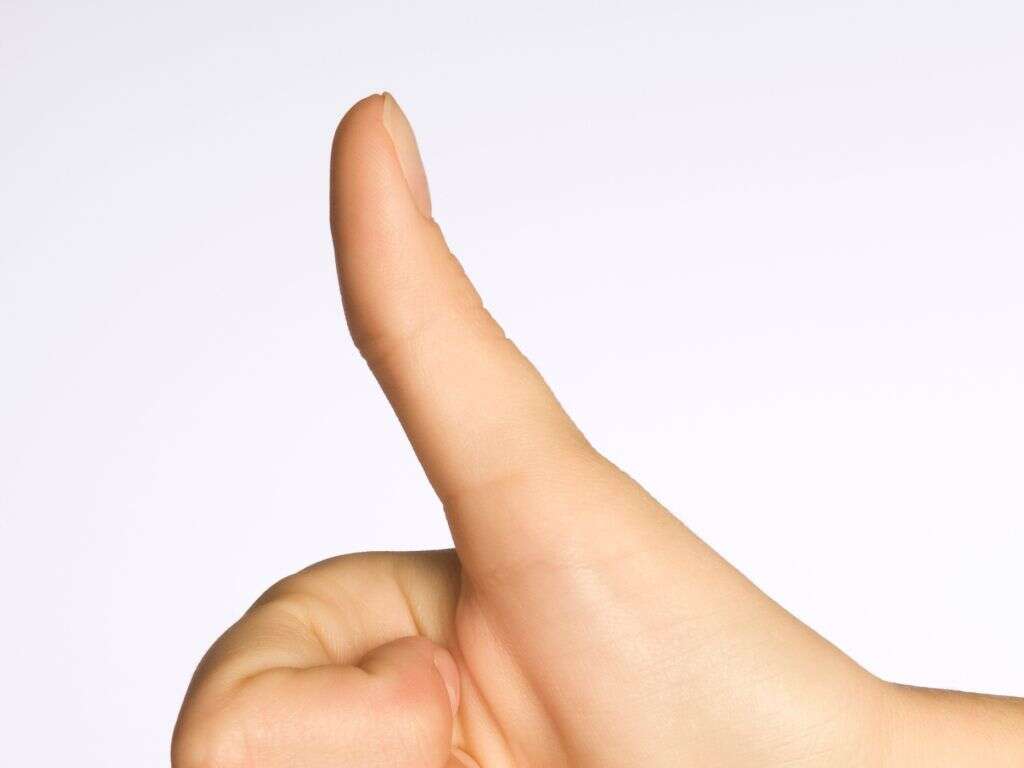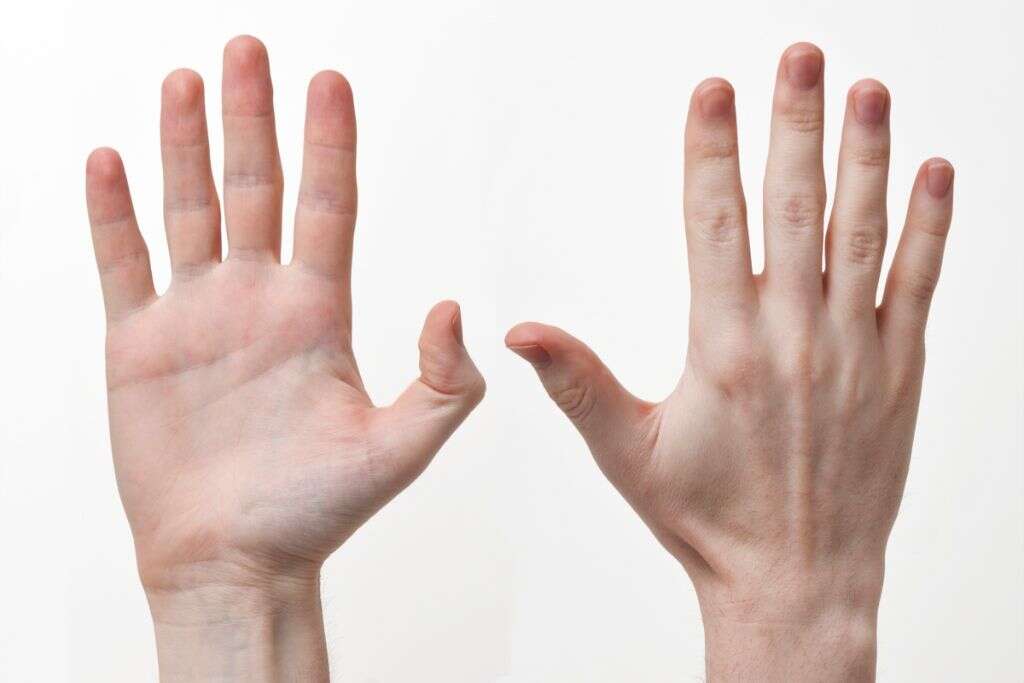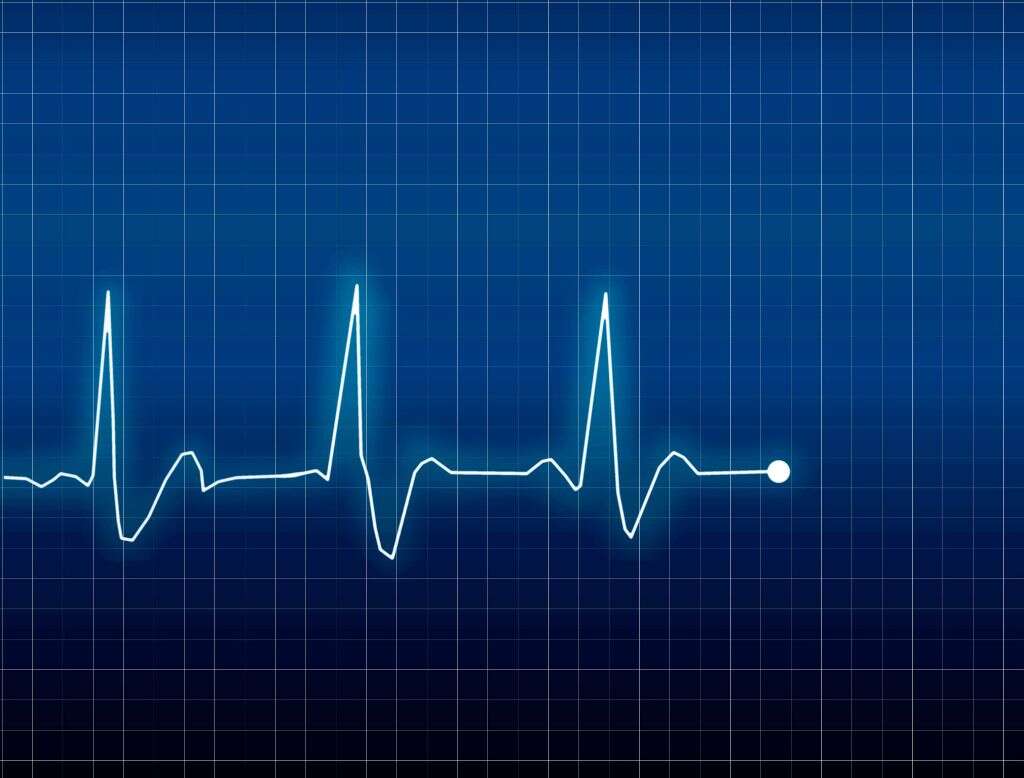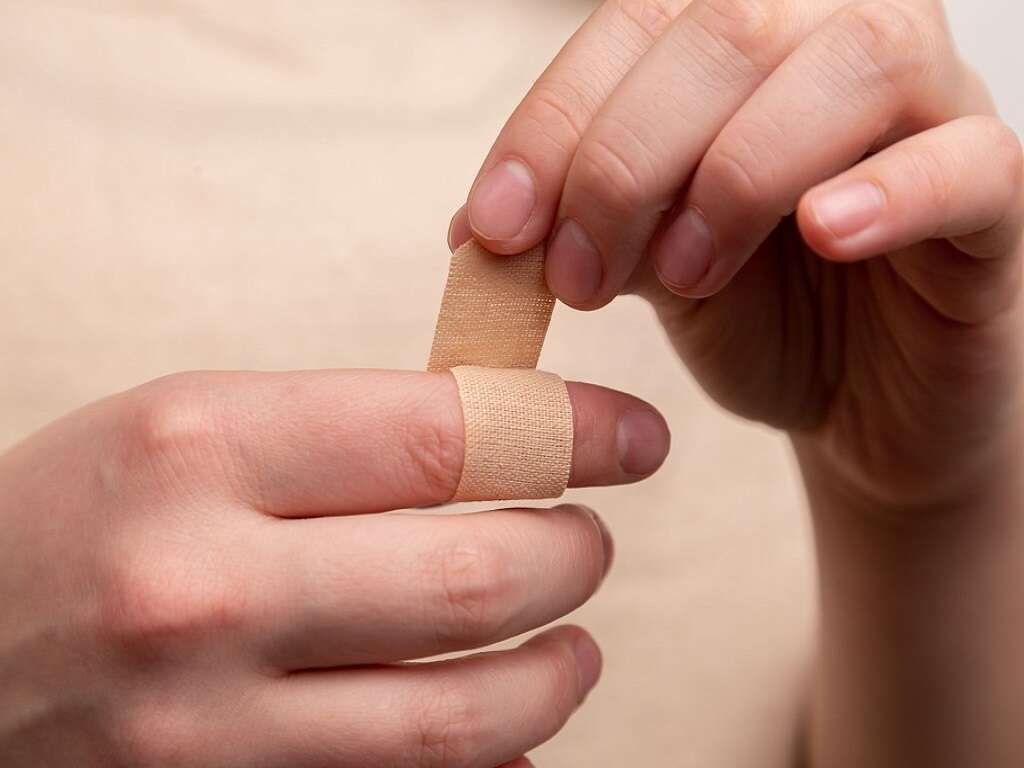Is the Thumb a Finger?
Our fingers are able to wrap tightly around objects. This is thanks to muscles that pull on tendons, causing the fingers to curl over tightly. The fingers and our palms also have tiny ridges on the skin and this helps to give us as much grip as possible.
For even more grip, however, we have also evolved opposable thumbs. This means that the thumbs can be curled inward to meet the fingers and the palm of the hand. This has helped to give us an evolutionary advantage that helped us to survive and evolve into the species we are today. Similarities between the fingers and thumbs often lead people to answer the question of whether or not the thumb is a finger.
1. What Are Thumbs For?
It is thought by many evolutionary scientists that the thumb is one of the key developments that helped to make us the superior species on our planet. Why? The answer is simply that it allows us to hold onto things, and this allowed us to start using tools. We are not the only animal to have thumbs. Our closest relatives, and some other species, also have them, and many of these will also use tools. When combined with our superior brainpower, however, the ability to hold onto things and use tools helps us to manipulate our environment in ways that no other species can.

2. Who Else Has Them?
As mentioned, we are not the only animals to have thumbs. As great apes ourselves, we have many similarities with the other apes such as gorillas, chimps, bonobos, and orangutans. Gorillas have opposable thumbs just as we do. The other great apes have opposable thumbs but their fingers are a lot longer, relatively speaking.
The other apes have longer fingers because they have adapted to life in the trees and their long fingers help them to be wrapped around branches. Other animals with opposable thumbs include monkeys, opossum, pandas, koalas, and even frogs. A lot of birds also have an opposable digit, often in the form of grapple-like talons that allow them to hold onto their prey.
3. What Does the Word Mean?
English words are not usually selected at random. The English language was actually constructed from a mixture of other languages, particularly European languages including Germanic, Greek, and Latin. When looking into the entomology of the word, you will often find that English words have been taken from others.
For example, the Latin word “tumere” translates roughly as “the swollen one,” which makes sense considering the thumb’s size and shape relative to our fingers. Similar words are still used in other European languages such as daumen in German, and duim in Dutch. The words all have the same or similar origins but have evolved in different ways over time.

4. Is the Big Toe a Thumb?
As we have evolved, our feet and hands have taken on very different roles. Our hands are used almost entirely for grasping, while our feet are used almost entirely as supports for our bodies when walking. With the feet not used for grasping, the big toe is not opposable. The question of whether or not the big toe is a thumb is not straightforward to answer.
It is not a thumb because thumbs are found on our hands, although the big toe has the official anatomical name hallux and the thumb is named pollux. In some primates like the gibbon, you will find that they do have opposable big toes, and these help them to grasp onto branches when swinging through trees.
5. How Do Fingers and Thumbs Differ?
Both fingers and thumbs are digits and have a lot of similarities. For example, the way that they bend to help us grasp things makes the two very much alike. There are some notable differences between them, however. The most obvious are size and shape, with the thumbs shorter and thicker, but there are even more profound differences.
Each of our fingers has two joints, and this makes it easier for us to wrap them around objects. The thumb, however, only has one joint. It has evolved to work in conjunction with our fingers so only one joint is needed. The thumb is also located much lower much on the hand, and this might help to give us more grip.

6. Thumb Sucking
Thumb sucking is an instinct that comes naturally. It is necessary for us to have an instinct to suck because we need to do so to get the milk that we need from our mother’s breasts. When a nipple is not available, babies will usually gladly turn to sucking their thumbs instead. We are not completely sure why babies do this, but it is likely to make them feel safer as it can remind them of being close to their mother’s breasts.
Remember that while thumb sucking is harmless for babies, it is something that should be discouraged as children get older because it may cause their teeth to grow distorted.
7. Finding a Pulse
If somebody appears to be unconscious, one of the first things that we do is look for a pulse. Finding a pulse will tell us that their heart is still beating, which is obviously a good sign. Not being able to find a pulse is a clear sign that they are in trouble, and emergency medical assistance is required.
One common way to look for a pulse is to place two fingers where arteries are located on the neck. Another common method is to look for a pulse in the thumb as they are served by the princeps pollicis artery. If you know what you are looking for, you should hopefully be able to feel the pulse beating as the blood is pumped through the artery.

8. Deformities
While hands come in different shapes and sizes, they are still likely to differ to a degree from person to person. Some people will have longer fingers than others and some will find that their hands are wider. In some instances, however, the shapes of some peoples’ thumbs and hands can be quite different.
Some hereditary conditions can cause a person’s thumb to grow misshapen. It might be curved to the point of being useless, while in some cases it might grow out of the hand at an unusual angle. Corrective surgery will often help but some people are left without a fully functioning thumb.
9. Convenient Speech
It is common for us to refer to thumbs as fingers. To say that somebody has five fingers on each hand is a lot easier than explaining that they have four fingers and one thumb on each hand. We automatically know what is meant and it doesn’t mean people will be imagining a hand with five fingers and no thumb.
If somebody does try to call you out on it, they are probably being pedantic, and you can quite easily just ignore them. Of course, if you are explaining literally having five fingers (no thumbs) on each hand then you should probably clarify so that people know just what you mean.
10. Is the Thumb a Finger?
To move onto answering the question at hand (no pun intended)? is the thumb a finger? Strictly speaking, no, it is not. Out thumbs are digits, just like our fingers are, meaning we usually have five digits on each hand. However, four of those digits are fingers, and the other is a thumb.
The OED actually describes a thumb as being short, thick, and opposing the fingers. Even is somebody does have a long, thin thumb then they would still be opposing the fingers. It is not something that you should be overly concerned about, though and, as mentioned, people will still know what you mean if you just say ten fingers.










